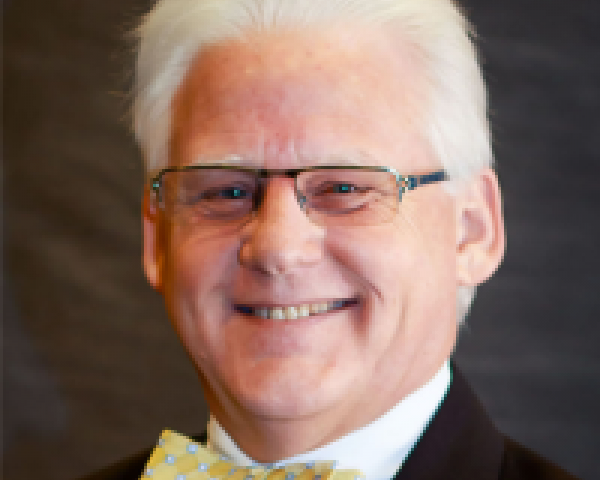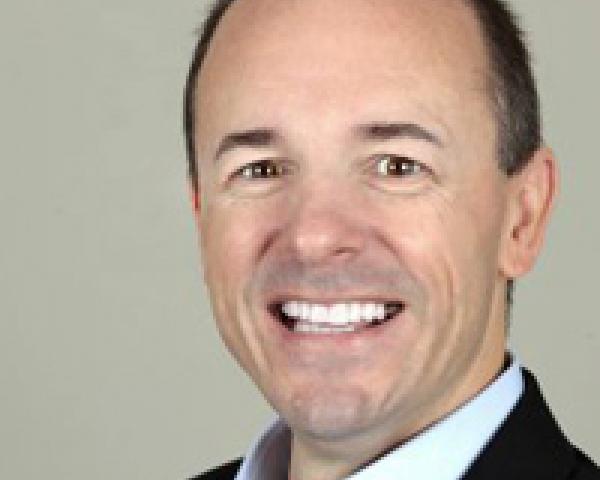Overview
Connected companies are organizations that move away from traditional hierarchies to embrace communities of employees that reach across departments and geographies. By implementing innovative technology solutions and designing workspaces that remove bottlenecks to collaboration, these companies are building smarter and more productive teams, increasing talent retention and creating a more satisfying work experience for their employees.
Within an organization, such networks can lead to innovation and competitive advantage. Mapping these communities
reveals that the amount of knowledge and information that flows through them far outweighs what is available through traditional organizational hierarchies and silos. The challenge for many large companies today — particularly at a time when consumers are more demanding in the services and support they seek — is to find ways to channel the power of such informal networks to fuel growth and revenue and to better serve their customers.
In-Depth
Businesses, both large and small, are typically organized by department. Within these formal structures, dozens of informal, shared-interest communities develop — either intentionally to enable collaboration across teams, or organically by employees through their shared interests.
Increasingly, it is through these often-invisible networks that work actually gets done in today’s knowledge-intensive companies. As ideas are shared — whether through instant messaging, collaboration tools, intranets or digital social networking platforms — extracting the value within these networks has never been more important – or,
if implemented effectively, easy.
Perhaps the biggest barriers to harnessing the power of these peer groups are the formal hierarchies, matrices and organizational charts that overlay them. These formal structures tend to downplay the power of informal relationships and the ideas and innovation that are their byproducts.
As executive leadership teams contemplate ways to boost the value of these networks, they should consider implementing both technological and structural changes. The idea is to encourage goal-oriented collaboration, create pathways to forging value-creating
informal connections and remove bottlenecks to networking across business functions.
Addressing the Needs of an Evolving Workforce
Changing workforce demographics are forcing organizations to rethink talent management. For example, the impending retirement of baby boomers means companies could face a
serious talent shortage and loss of important institutional knowledge. The new workplace imperative is to accommodate the needs of all employees, ensuring they can share information and knowledge effectively.
With various skills in short supply, some businesses are increasingly hiring outside their traditional geographic regions to attract and retain top talent, creating a more
distributed workforce. As a result, companies are retooling their knowledge-sharing technology to support remote employees.
Flexible working programs are forcing executives to rethink corporate real estate and space planning. Should virtual workers be entitled to office space? What workspace designs and technology are necessary to support office workers collaborating with their virtual counterparts?
Similarly, many employees want stronger and deeper connections with each other and their leadership, and they are looking for more instantaneous feedback on their work instead of the traditional employee review.
Maximizing the Benefits of Instant Feedback
“Today’s business environment is real-time,” says Teryluz Andreu, U.S. engagement leader at Aon Hewitt. “Customers act and interact with the swipe of a screen and a click of a button. Data is available immediately, and, increasingly, today’s customer expects instant results.”
Employees are no different.
“Millennials, in particular, are looking for continuous feedback loops to improve their daily work — not after long, sometimes rather complex, process and formal surveys,” Andreu says.
This feedback from employees is essential for the organization to analyze and act upon. Research has shown that employees want organizations to encourage them to speak up, actively solicit their feedback and encourage conversations across the business.
Making Informal Networks Formal
To help address these emerging needs and maximize the opportunities they present, businesses with entrenched hierarchical structures could consider introducing
flatter structures that encourage collaboration, similar to those
popularized by startup culture.
Rather than completely restructure, businesses can explore designing and supporting
informal networks around
ad hoc peer groups. These can be designed to focus on a specific work area of mutual self-interest, bringing more diverse perspectives to problems and unlocking enormous value at low cost.
Before undertaking such an effort, leaders need to very clearly understand the
objectives and the outcomes you are trying to drive in your company and (with) your colleagues,.
Just as formal hierarchical structures have defined management roles, employee networks should have defined collaborative roles. These connected communities benefit from designated group owners and “knowledge managers.” In this way, networks can support the creation of small, focused communities of interest within larger communities — for example, sub-communities focused on the different industries within healthcare, such as pharmaceutical and medical devices.
By participating in these smaller communities, talented workers gain access to knowledge across the company. A person in the medical devices community could also be a member of a marketing community, helping both groups better understand the needs of the other.
Carrying out analysis of existing communities by working through influential employees who are already connected with them can help companies formalize networks. This can often make collaboration more efficient and secure buy-in from existing members. These individuals also tend to have a strong perspective on which people from disparate functions, locations or groups can add the most value.
Learning How to Listen
A critical factor in formalizing employee networks is ensuring employees are engaged and empowered to participate. “Agile listening” encourages continuous conversations between employees and company leadership, often through technological solutions. These new types of feedback loops are often less cumbersome, intrusive and costly than their annual or semiannual survey counterparts, helping companies and employees put new ideas into practice quickly.
“Creating networks and connections is a basic human need,” Andreu says. “Having issues addressed and feedback acted upon is essential to an individual’s engagement and work output. Organizations that listen and respond to their worker’s concerns satisfy the need of employees to feel connected to their organization and part of a larger community.”
According to Andreu, one of the primary benefits of agile listening is the ability to act on feedback in real-time and to also help balance the onus of “employee engagement.” Instead of staff feeling employee engagement is only a result of what the organization does, these new tools can now help the individual to proactively improve their own engagement.
“These personalized engagement reports for employees help address what they need to change about their own behavior to improve their engagement and, more importantly, what things they can change in the workplace to feel more connected,” Andreu says.
From Connections to Collaboration
To enable these connections and boost internal networks, businesses need to identify and implement the right mix of technological tools. Just as LinkedIn, Facebook and Twitter have changed the way individuals communicate, there is now an array of powerful and secure communications tools that
allow for easy collaboration across time zones and from virtually any location.
Internal social networks like Microsoft’s Yammer or Facebook for Business can also support the development of communities of interest within larger networks. Rather than searching for an answer or expert within a large and often cumbersome database, these tools allow employees to search for employees outside their direct groups based on expertise or skills.
Companies can also establish a robust intranet or private website that is accessible by employees only. These are useful not only for publishing news and sharing essential company policies and updates, but they can also serve as a secure place in which to communicate in real time, improve collaboration, outline strategy and provide essential training.
Rethinking Workspaces to Break Down Silos
Beyond the business case, companies should have some sort of cultural readiness assessment in place because it is a (big) cultural change. Technology alone is often not enough to help bring about such changes.
This is why, in addition to technology powering collaboration, structural changes to physical workspaces can help promote a more networked work environment.
A well-designed workplace can catalyze the collaborative behaviors businesses want to promote, energize and motivate among workers.
It’s essential to understand “people want to interact, socialize and play with each other at work,” says Lyle Sandler, head of technology, design and human experience at Aon. “But they find themselves sequestered to cubicles and windowless offices. Instead of interacting with humans, they are glued to computer screens and sometimes overly tied to technology instead of what is more natural to us: human interaction. The ‘
agile workspace’ provides us with the opportunity to explore these natural human behaviors — behaviors that produce ideas and drive innovation.”
Sandler also notes that well-designed agile workspaces can encourage “successful collisions.” A smart and thoughtful workplace design can “get people to literally bump in to each other, speak with others that one wouldn’t normally interact with and ask for help and perspectives from people with different backgrounds.”
The Business Benefits of Collaboration
Networks can generate significant value by activating talented employees and encouraging them to work together across the enterprise. The benefits of a networked approach can be
substantial: smarter teams, improvements in workforce productivity, better customer service, product innovation, efficiency gains and reduced overheads.
The connected company also constitutes a win for employees and a strong reason to join — or stay with — a company in an age of increasing competition for top talent. They can look forward to greater workplace flexibility, more engaged and satisfying experiences on the job and a culture of collaboration. All this can lead to better financial performance and better long-term prospects for the entire business.
Talking Points
“We are at an interesting inflection point — a time when many of the scenarios we have been talking about for a long time are almost becoming reality.” –
Jackie Fenn, fellow emeritus in business innovation and emerging trends, Gartner
“In a nutshell, collaboration tools eliminate silos — one of the biggest inhibitors to digital transformation today.” –
Andy Litherland, VP of European channels, Avaya
“When it comes to breaking down silos, I don’t think you’re ever really done. It’s something you work on every day and every year, by emphasizing that we’re all in this together.” –
Pat Cunningham, director of aviation, Pepsico
Further Reading
- Team Spirit: Businesses Are Embracing the Idea of Working in Teams. Managing Them Is Hard – The Economist, March 19, 2016
- A Managed Services Model for the Connected Workplace – Computer Weekly, March 17, 2016
- Could a Workplace Redesign Lead to Better Collaboration – TechTarget, March 31, 2016
- Social Networking Comes (at Last) to the Workplace – The Wall Street Journal, March 14, 2016
- What’s Next for Collaboration in the Workplace? – InformationAge, March 17, 2016
























